50 years ago to the day, on 24 May 1974, America mourned the passing of its arguably greatest composers. Without doubt, Duke (Edward Kennedy) Ellington was the greatest jazz composer and bandleader of his time. One of the originators of big-band jazz, Ellington led his band for well over half a century. He managed to create one of the most distinctive ensemble sounds in all of Western music, and he literally composed thousands of scores. His papers are housed at the Smithsonian Institution, but the total amount of existing sheet music and recordings is still unknown.
Duke Ellington: “Bundle of Blues”
Growing Up
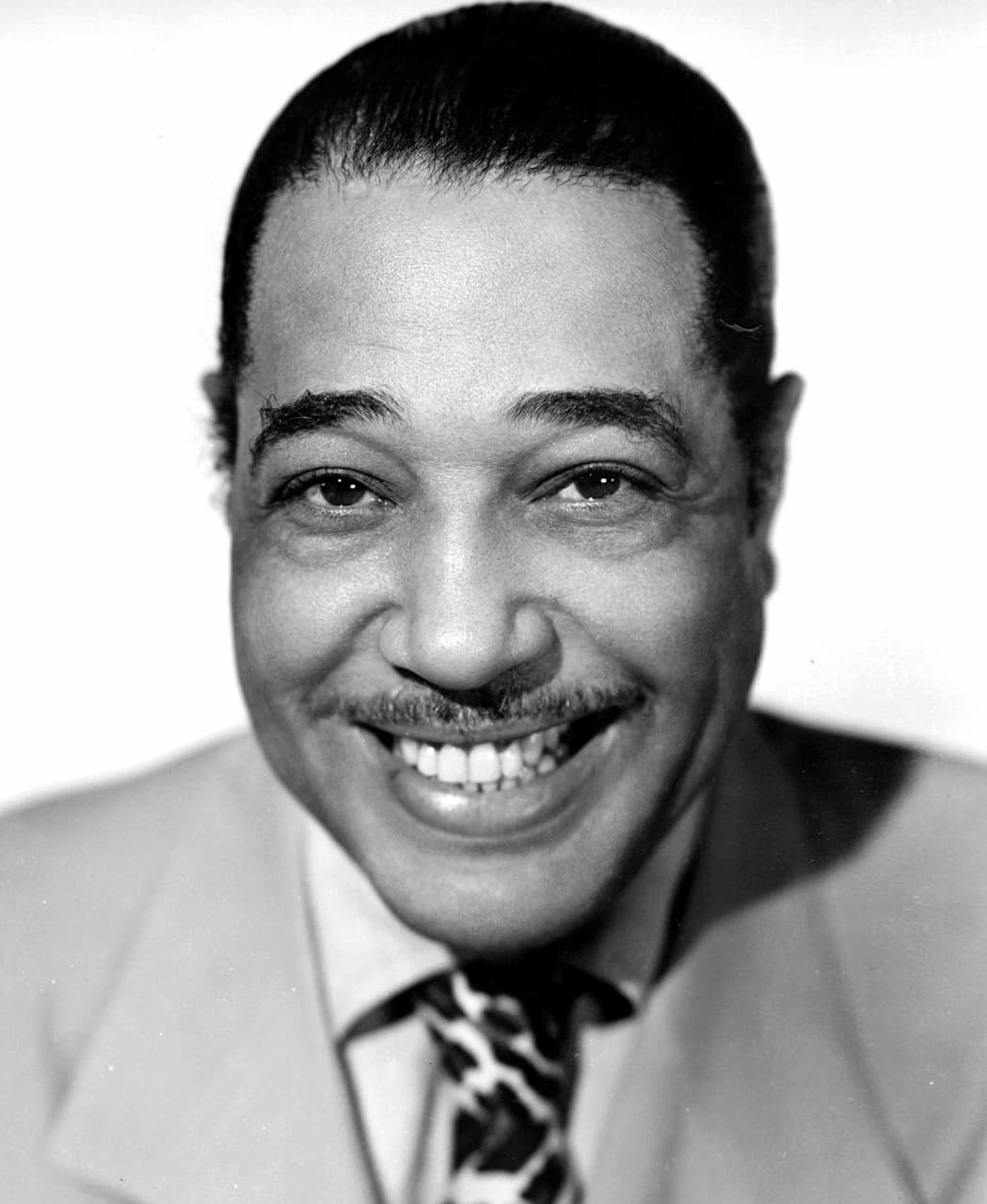
Duke Ellington in the 1940s
Ellington grew up in a middle-class family in Washington, D.C. His father James Edward held temporary jobs at the White House, and he could play operatic arias on the piano by ear. His mother Daisy Kennedy was also a capable amateur pianist, and the family encouraged his interest in fine art. Ellington, nicknamed “Duke” by his childhood friends, took his first piano lessons at seven.
By his own account, Ellington did not enjoy his piano lessons with Marietta Clinkscales. Rather, he became fascinated by art during his high school years. He did receive a scholarship to the Pratt Institute in Brooklyn, New York, but did not accept the award. However, attending dance parties and pool rooms, he got inspired by ragtime performers and started to perform in various bands.
Duke Ellington: “It don’t mean a thing”
The Duke’s Colored Syncopators
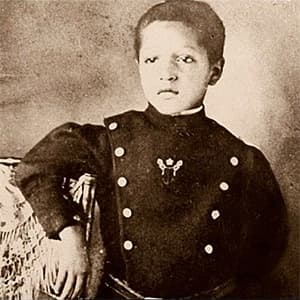
The young Duke Ellington
Ellington soon realised that his lack of musical knowledge might be a problem, so he dropped art school and studied piano, theory, and harmony. By 1917 he founded his first band, called “The Duke’s Colored Syncopators,” an ensemble in great demand at social events. Re-christened “The Washingtonians,” the band eventually landed a four-year job with singers and dancers.
Ellington continued his education by studying composition and orchestration, and the initial sextet had grown into a 10-piece ensemble that established much of the Ellington sound. It featured “singular blues-based melodies, harsh vocalised sound by trumpeter Bubber Miley, and the sonorities of the distinctive trombonist Joe (“Tricky Sam”) Nanton playing muted growl sounds.” His break-out hit was “East St. Louis Toodle-oo” of 1926, unveiling an entirely new sound palette.
Duke Ellington: “East Saint Louis Toodle-Oo”
Cotton Club in Harlem
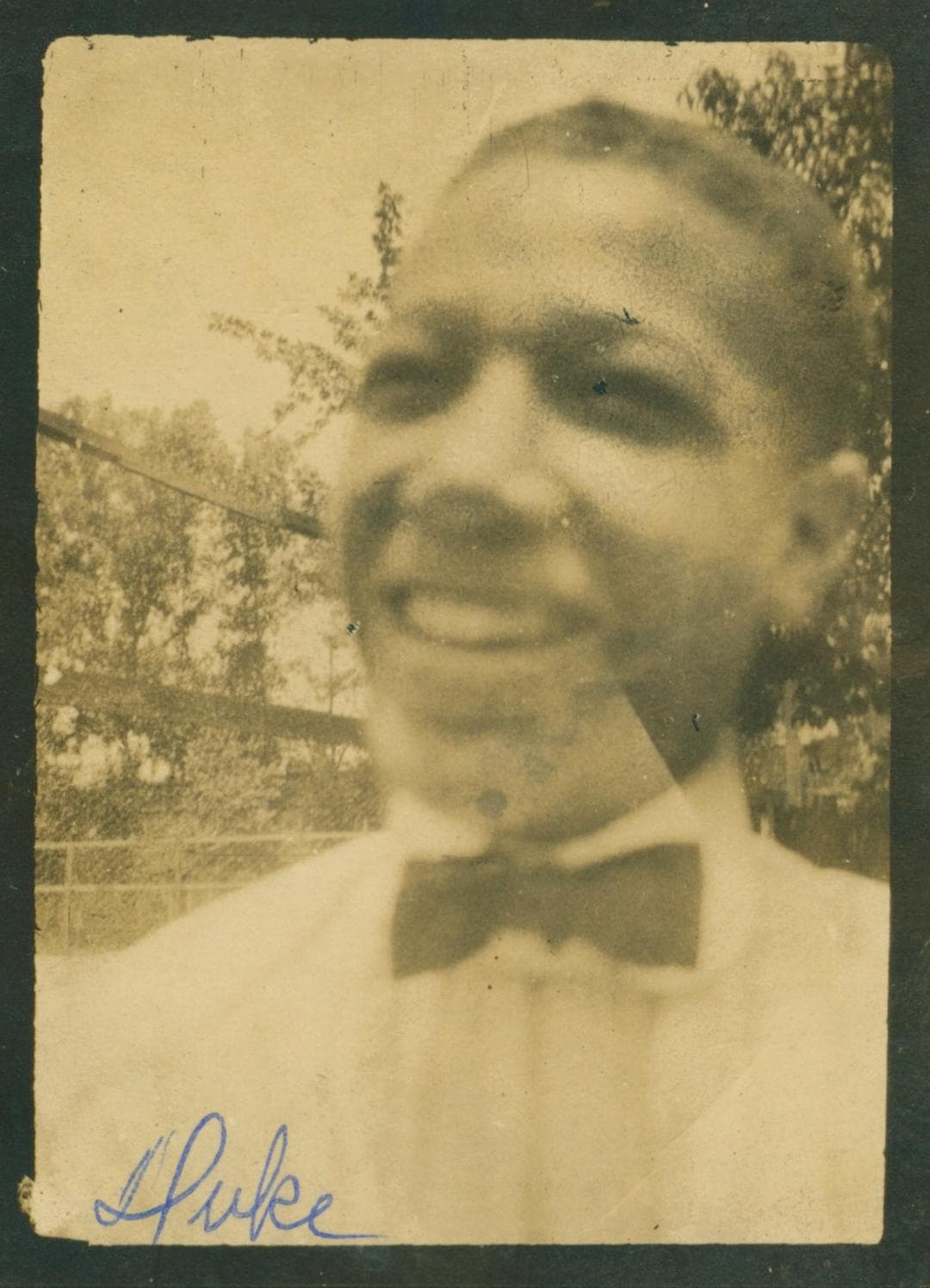
The young Duke (Edward Kennedy) Ellington
Between 1927 and 1931, Ellington took up extended residencies at the Cotton Club, a Harlem venue for a wealthy white clientele. Against a backdrop of jungle images painted on the walls, Ellington enlarged his band to 14 musicians and he expanded his compositional reach. The band was reinforced by exceptional jazz artists in their own right, including trumpeter Cootie Williams, trombonist Lawrence Brown, and alto saxophonist Johnny Hodges.
Around the same time, Ellington also met publisher Irving Mills, and their long association, from 1927 to 1939, turned Ellington into a celebrity. The newly found expertise of his ensemble allowed Ellington to break away from the conventions of regular band-section scoring. He started to blend the individual sounds of his expert musicians to create new harmonies that resulted in lyrical mood pieces, like “Mood Indigo.” This famous tune features muted trumpet, unmuted trombone, and low-register clarinet.
Duke Ellington: “Mood Indigo”
Fame
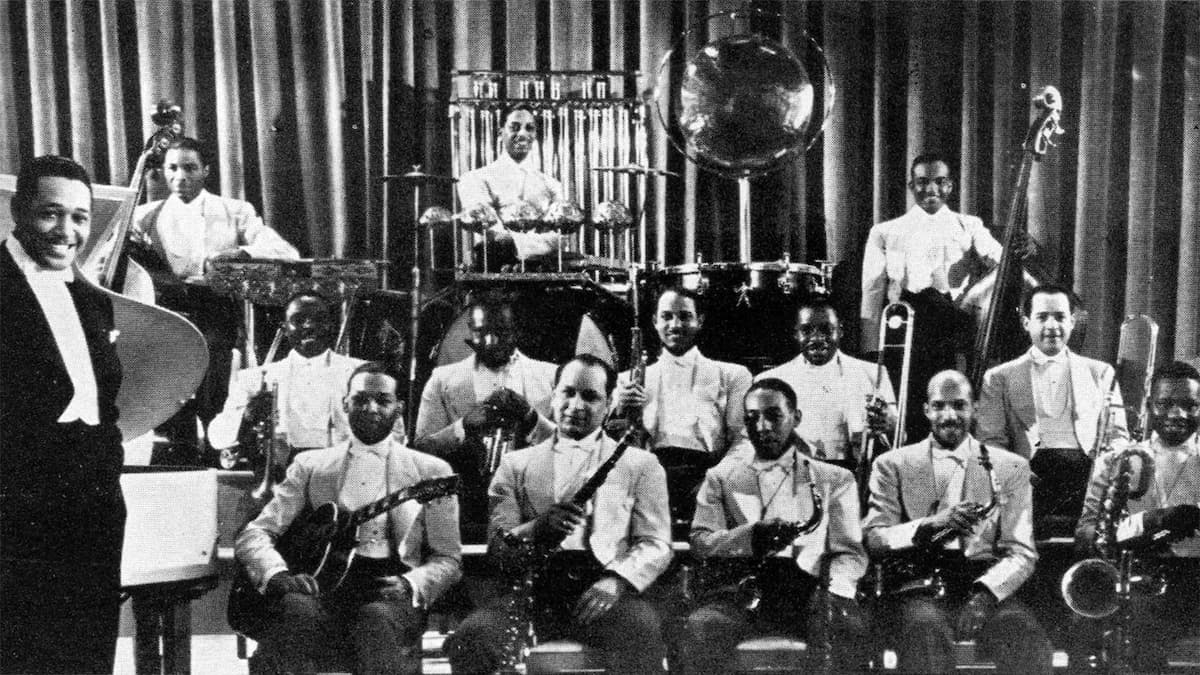
Duke Ellington at the Cotton Club, 1932
With his ensemble in place, Ellington made hundreds of recordings, appeared in films and on radio, and toured Europe in 1933 and 1939. While his audience in the United States remained mainly African American, the orchestra had a significant following overseas. The troupe travelled to England and Scotland and played three concerts at the Salle Pleyel in Paris. The British visit saw Ellington win high praise from members of the serious music community.
Ellington had also begun to compose extended works, including pieces such as “Creole Rhapsody,” and “Reminiscing in Tempo.” This 12-minute kaleidoscope of images and memories was rather severely panned by English critics, and Ellington decided to confine his compositions to the three-minute format.
Duke Ellington: “Creole Rhapsody”
Swing
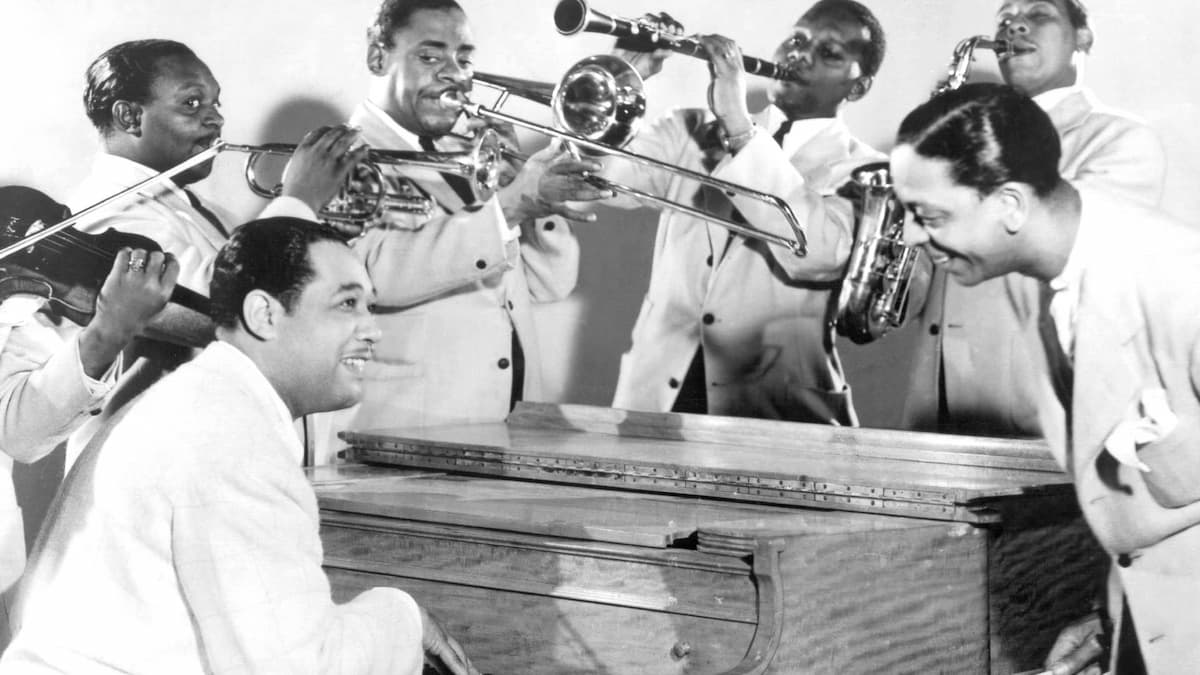
Duke Ellington and the Renaissance Harlem Orchestra
With swing now taking over the popular imagination, Ellington experienced a brief dry spell. His records issued by Irving Mill were generating low sales, and in 1939, Ellington hired Billy Strayhorn as a second pianist, composer, arranger, and lyricist. Strayhorn was academically trained and soon became a vital member of the Ellington organisation.
Ellington never failed to speak glowingly of the man and their collaborative working relationship. He called him “my right arm, my left arm, all the eyes in the back of my head, my brain waves in his head, and his in mine.” Strayhorn not only contributed original lyrics and music but also arranged many of Ellington’s works. He would soon become known as “Duke’s Doppelgänger.”
Duke Ellington: “Concerto for Cootie”
Carnegie Hall
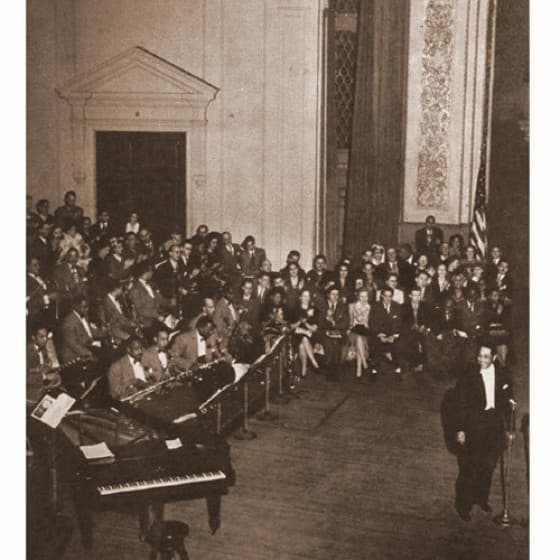
Duke Ellington at the Carnegie Hall
In 1942 Carnegie Hall got in touch with Ellington and contracted him to give one concert per season, each time premiering an extended work. For his first concert, Ellington drew music from his never-completed opera Boola, a work that traced the history of blacks from Africa to the future. Black, Brown and Beige, turned out to be a 48-minute symphonic suite à la Rimsky-Korsakov, a musical narrative of black history in the United States.
Ellington followed up with the “Deep South Suite,” a tale of social injustice, the “Liberian Suite,” a work originating within the Masonic content, and the humorous “The Tattooed Bride.” Turning to large works, Ellington’s “writing achieved complexity, thickness, and grandiloquence,” while short pieces declined in quality. However, long compositions proved hard to digest for jazz audiences; hence he occasionally opted to concoct suites by stringing together several short movements, often co-composed with Strayhorn.
Duke Ellington: “Black, Brown and Beige Suite”
Experiments and Eclipse

Duke Ellington in London, 1933
Ellington reached the zenith of his career in the early 1940s, composing a number of masterworks, including “Concerto for Cootie,” the up-tempo showpieces “Cotton Tail” and “Ko-Ko,” and the uniquely structured, compressed panoramas “Main Steam” and “Harlem Air Shaft.” Ellington tried to expand jazz composition, however the decline of big bands and the associated dancing medium triggered a general crisis.
Ellington made several changes to his band, but the sing band format had become outdated. “Jazz was increasingly focusing on solos and social dance drifted toward Latin rhythms.” The market was looking for some light musical form, and his only hit “Satin Doll” featured an updated piano style. In 1951, Ellington suffered a significant loss of personnel as Sonny Greer, Lawrence Brown, and Johnny Hodges left to pursue other ventures.
Duke Ellington: “Satin Doll”
Career Revival
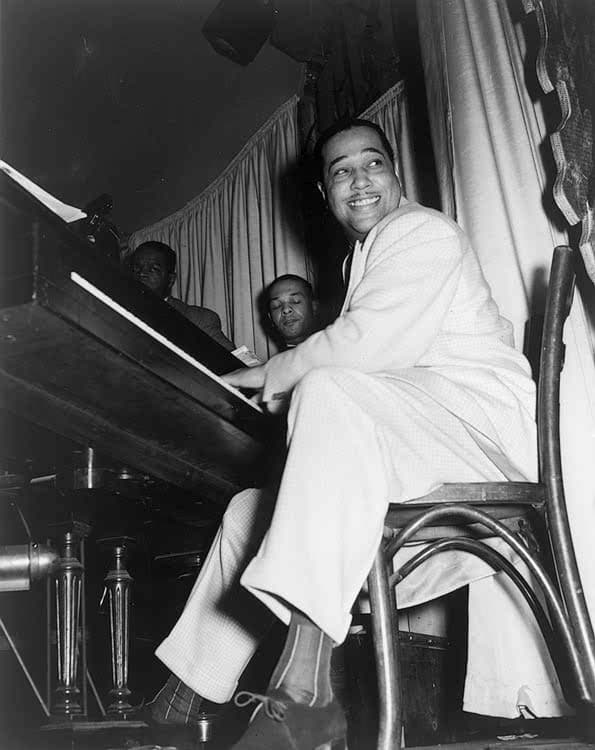
Duke Ellington at the Hurricane Club, 1943
During the mid-1950s, jazz festivals began offering alternatives to commercial clubs, hotels, and ballroom engagements. Ellington appeared at the Newport Jazz Festival in 1956, and the jazz world quickly rediscovered him. He was booked into venues across Europe, and he travelled from one dance date to countless concert venues throughout the United States. Enthusiastic audiences were treated to medleys of old and new pieces.
Ellington’s scores from this time are significantly lighter, and he provided visionary musical landscape in his motion-picture scores for The Asphalt Jungle (1950) and Anatomy of a Murder (1959). He also composed for ballet and theatre, including the celebration of African American life My People at the height of the American civil rights movement.
Duke Ellington: Night Creature
Ambassador
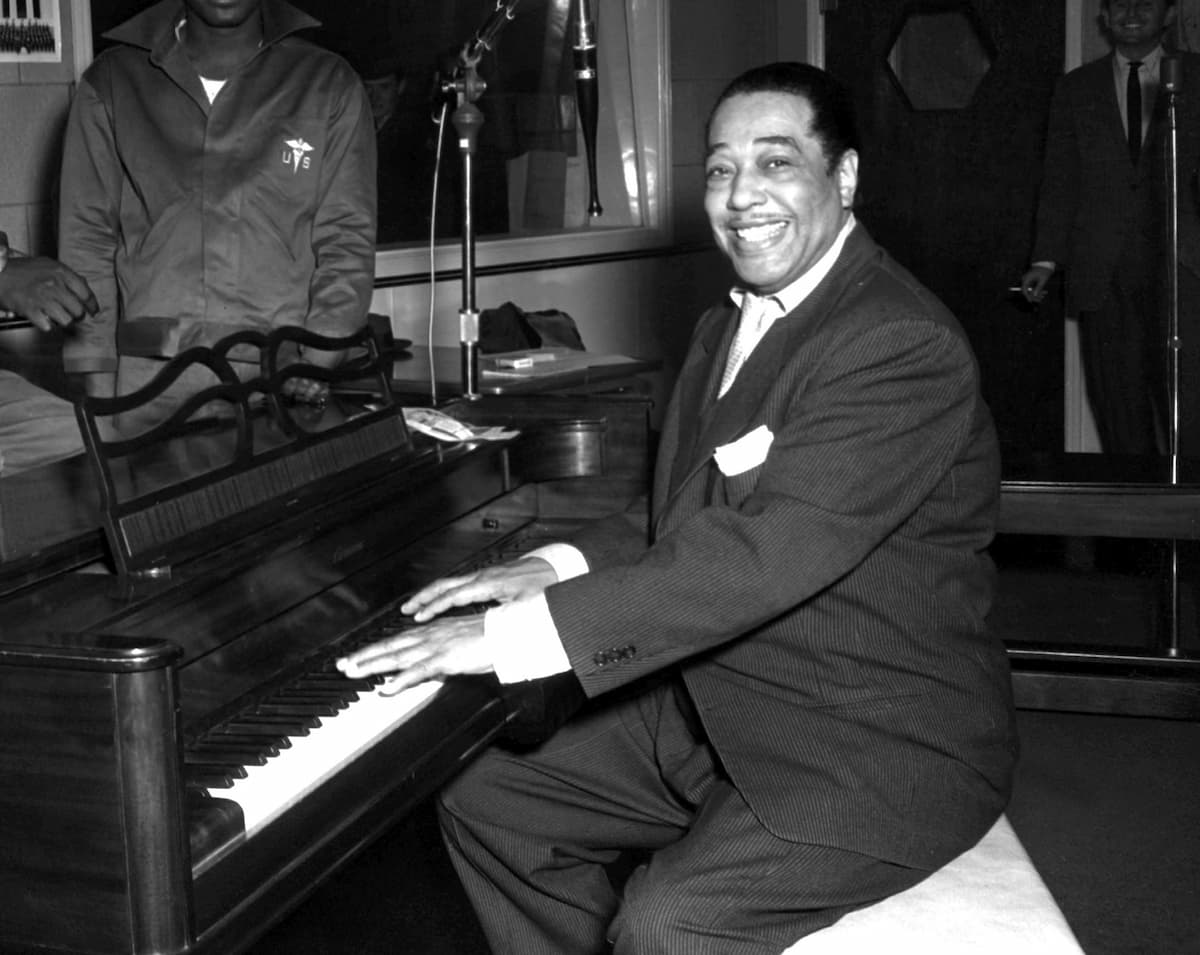
Duke Ellington, 1954
Ellington had frequently toured the United States and Europe over the years, however a trip to the Near East opened an entirely new chapter. Ellington visited Japan, West Africa, the Caribbean, Australia, Latin America, and the USSR. Essentially, his trips were diplomatic affairs involving a good amount of ceremony.
A scholar writes, “Ellington observed places, people, and customs; music became his travel journal. Inspiration from black history and identity lost its central role; its ethical content (equality, justice) expanded into a global vision of the humankind/God relationship.” Ellington performed with his orchestra until March 1974.
Duke Ellington: “Transblucency”
Legacy
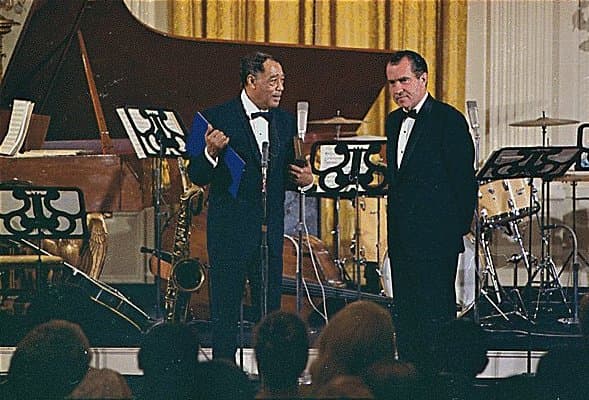
Richard Nixon and Duke Ellington, 1969
Although Ellington’s compositional interests and ambitions changed over the decades, his melodic, harmonic, and rhythmic characteristics were for the most part fixed by the late 1930s, when he was a star of the swing era. He was regarded as the creator of picturesque jungle sketches, a great songwriter, a successful bandleader, an ambitious jazzman, and an ageless classic.
The view of Ellington as a natural talent who had virtually no command of large forms is now being challenged, as it is the myth that he was a self-made man. Yet, he had a great sense of musical drama and a gift for melody and sonic textures. Much of his output is danceable, and as a pianist, Ellington was an energetic follower of the stride school. “As his harmonic world expanded he became a fully modern improviser.”
In 1931 Ellington wrote: “What we could not say openly we expressed in music, and what we know as ‘jazz’ is something more than just dance music.” He repeatedly returned to his favourite subjects: Harlem, Negro history and identity, human diversity, sex, faith, landscapes, and dance. Ellington maintained his regal manner and charmed audiences for more than half a century. His autobiography, Music Is My Mistress was published in 1973.
For more of the best in classical music, sign up for our E-Newsletter
